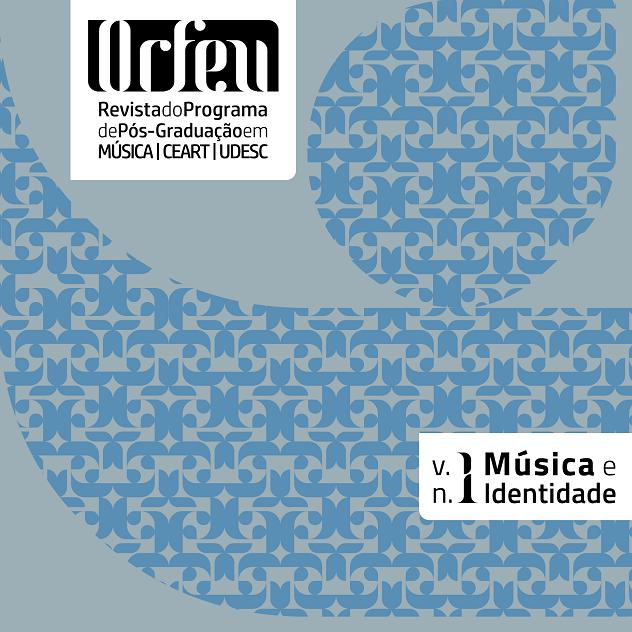Gomes’ orchestration for bass section in Salvator Rosa
DOI:
https://doi.org/10.5965/2525530401022016156Keywords:
Instrumentation and Orchestration, Musicology, Antônio Carlos Gomes, OperaAbstract
After resounding success of Il Guarany and the controversies generated by
his audacious Fosca, Antônio Carlos Gomes, now well experienced in two different models, the grand opera tradition in the former and the inovation in the latter, puts on the stage his Salvator Rosa (1874), using standard procedures of structure and musical composition. Despite this return to the conventions, we see greater freedom of writing to the brass’ section from the composer, giving them unusual roles for the old school melodramma. First elucidating the role of brass in theater orchestras from the main treatises of instrumentation and orchestration studied in Italy at the end of the first half of the nineteenth century, the work also aims to present the cimbasso – common term in the works of Gomes and representative of the low range of the brass instruments in his orchestra. Using as methodology the analysis of treatises of instrumentation, orchestration and
texts of the Gazetta Musicale di Milano, the work contextualizes the instrumental tradition operated by Gomes to the composition of his Salvator Rosa at the same time presenting an eloquent writing mode for the section of the brass, approaching the instrumental apparatus that vocal usual. Because of the discrepancy of the editions found, the scanned original manuscript of the opera was the main source consulted.
Downloads
References
ADLER, Samuel. The study of orchestration. New York: W. W. Norton & Company, Inc., 2002.
ASIOLI, Bonifazio. Il maestro di composizione. Milano: Ricordi, [ca. 1836], v. 3.
BERLIOZ, Ettore, PANIZZA, Ettore. Grande Trattato di Istrumentazione e d’Orchestrazione moderne. Milano: Ricordi, 1912.
GAZZETTA MUSICALE DI MILANO. 31 de março de 1844 p. 52 (Ano III, Nº 13).
GOMES, Carlos Antônio. Salvator Rosa. Melodramma em quatro atos (partitura). Rio de Janeiro: Biblioteca Nacional, 1874. Disponível em http://objdigital.bn.br/objdigital2/acervo_digital/div_musica/mas617636/mas617636.pdf; Acessado em 29/03/2016.
MEUCCI, Renato. Il cimbasso e gli instrumenti afini nell’ottocento italiano. In: Studi Verdiani. Parma: Istituto Nazionale di Studi Verdiani, 1989. v. 5, 1989/90, p. 109-162.
NOGUEIRA, Lenita Waldige Mendes. Maneco Músico Pai e mestre de Carlos Gomes. São Paulo: Editora Arte & Ciência, 1997.
NOGUEIRA, Lenita Waldige Mendes. Museu Carlos Gomes – Catálogo de Manuscritos Musicais. São Paulo, Arte e Ciência, 1997.
NOGUEIRA, Marcos Pupo. Muito além do melodramma: os prelúdios e sinfonias das óperas de Carlos Gomes. São Paulo: Editora UNESP, 2006.
REICHA, Anton. Corso di composizione musicale. Milano: Ricordi [ca. 1839].
RONQUI, Paulo Adriano. O naipe de trompete e cornet nos prelúdios e sinfonias das óperas de Antônio Carlos Gomes. Campinas, 2010. 222 p. Tese (Doutorado em Música). Instituto de Artes. Campinas: Universidade Estadual de Campinas, 2010.
VIRMOND, Marcos da Cunha Lopes. Construindo a Ópera Condor: o pensamento composicional de Antonio Carlos Gomes. Campinas, 2007. 332 p. Tese (Doutorado em Música). Instituto de Artes. Campinas: Universidade Estadual de Campinas, 2007.
Downloads
Published
How to Cite
Issue
Section
License
Copyright (c) 2016 Orfeu

This work is licensed under a Creative Commons Attribution 4.0 International License.
Authors who submit their manuscripts to be published in this journal agree to the following terms:
1. Authors retain the copyright and grant to the journal the right of first publication, whilst simultaneously permitting their work to be licensed under the Creative Commons License Attribution, which allows the sharing of work with recognition of the authorship and initial publication in this journal.
2. Contributions in this journal are open access; this means they are based in free use, and non-commercial applications.






